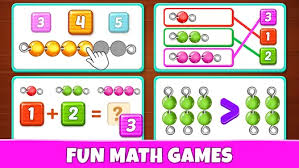
When your family played a game, has anyone ever felt excluded? You know how the bigger kids are on their phones while the younger kids are flinging pieces at each other? Try these strategies to help all participants enjoy the game and get some enjoyable arithmetic practice at the same time. These three classic games have been updated:
Game #1: Multiplying Past Uno
Traditional Uno is a fun game for matching colors and numbers, but you can add different levels to the same game to bring an extra challenge for older children.
- Level 1: Have younger children identify the colors and numbers as they place them into the pile. If you have a toddler watching along, encourage them to say the numbers and colors, too.
- Level 2: Challenge children to multiply the number on the card they are covering with the card they place on the pile. If they cover a red 3 with a red 5, they will multiply 3 x 5 to get 15. If your child is just learning to multiply, you can let them use a multiplication chart.
- Level 3: Take the challenge to the next power with exponents! Have your child use the number they cover and raise it to the power of the card they place down on the pile. For example, if they cover a red 3 with a red 5, they will answer 3 to the fifth power, or 3 x 3 x 3 x 3 x 3. Don’t worry, they can always use a calculator for faster calculations.
Game #2: A Difference Is Made by Candyland
Yes, it’s thrilling to imagine a fantastical world populated by sweets. When kids practise counting and subtracting, this matching colours game will become even more delightful.
- Level 1: Ask players to count out loud the boxes they move when they draw a card featuring a particular colour.
- Level 2: As the players approach the finish line, have them add to their previous number. When they receive another turn, they should count up from 14, for instance, if they are now on the fourteenth square colour from their previous round. They can write the numbers on their number chart as they go or highlight a hundreds chart to help them remember their final number.
- Level 3: Have your older kids use two 20-sided dice and shift the difference between them instead of using the colour cards from the game. Have them complete the board two or three times to win, since they might finish much sooner than the younger players.
Game #3: Sorry Substitutions
There’s never a better feeling than taking out your opponent’s piece on the board when you say “Sorry.” As the numbers on the cards determine all pawn movements in the game, switching up the cards can make the game more difficult or easier.
- Level 1: Let players use the number cards that come with the game, but use a separate deck with a limited number of cards. So, if you really want your children to recognize certain numbers, like 1, 2, and 3, then you can use the cards with only those numbers. As your children learn more numbers, you can add those to the deck. Alternatively, you can use ten frame cards.
- Level 2: Switch out the number cards for cards with number sentences (10 – 8) that ask players to add, subtract, or divide to get the number of places they need to move their pawn. Increase the challenge further by adding two-digit numbers.
- Level 3: Make the math more difficult when you substitute the number cards for cards with exponents or equations that contain variables. Since some exponents may repeat, like 2¹ = 2, players can practice solving the cards quickly and memorize some of the applicable rules.
Recall that in a game, the rules are determined by the consensus of all players. Feel free to modify any game using any of these math-inspired tweaks to make it suitable for every member of your family!










